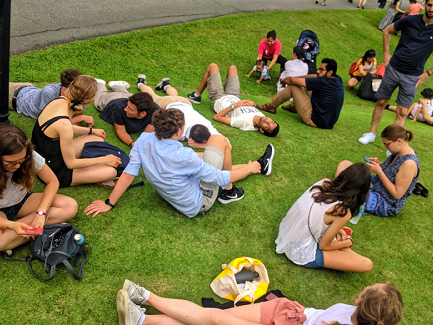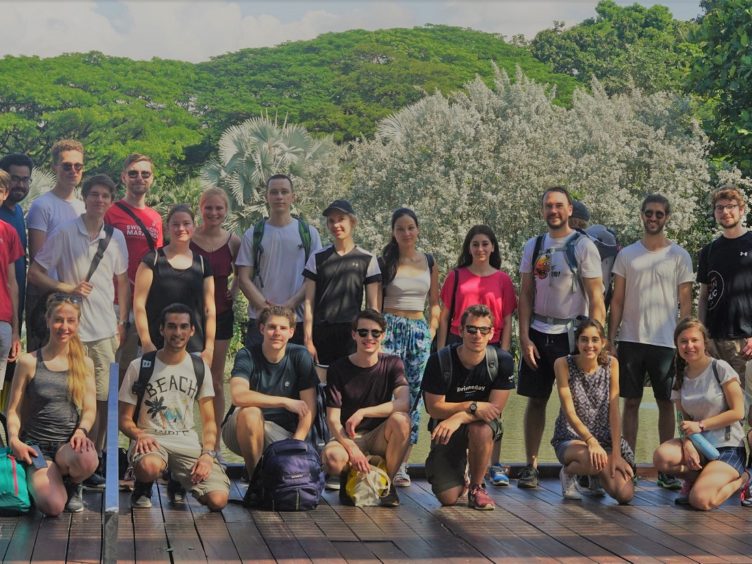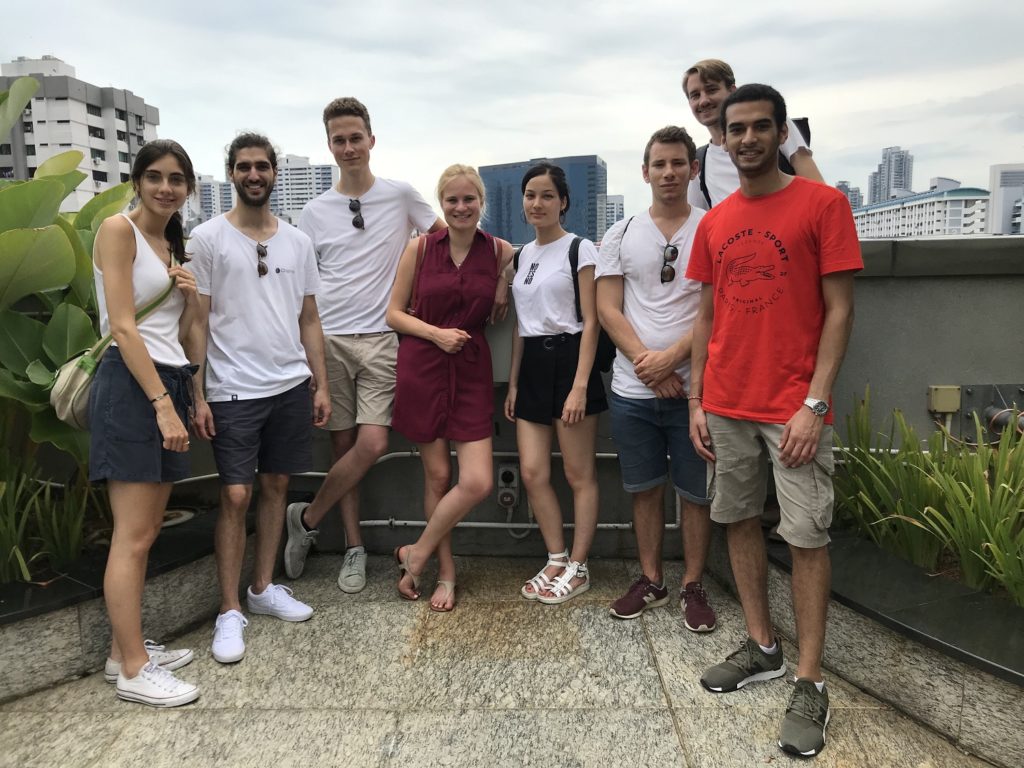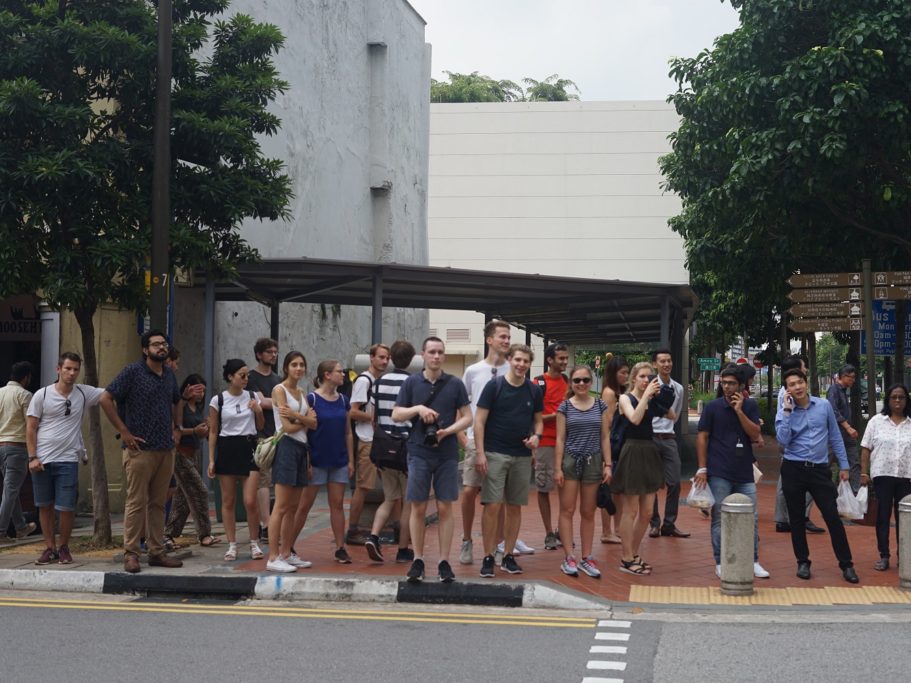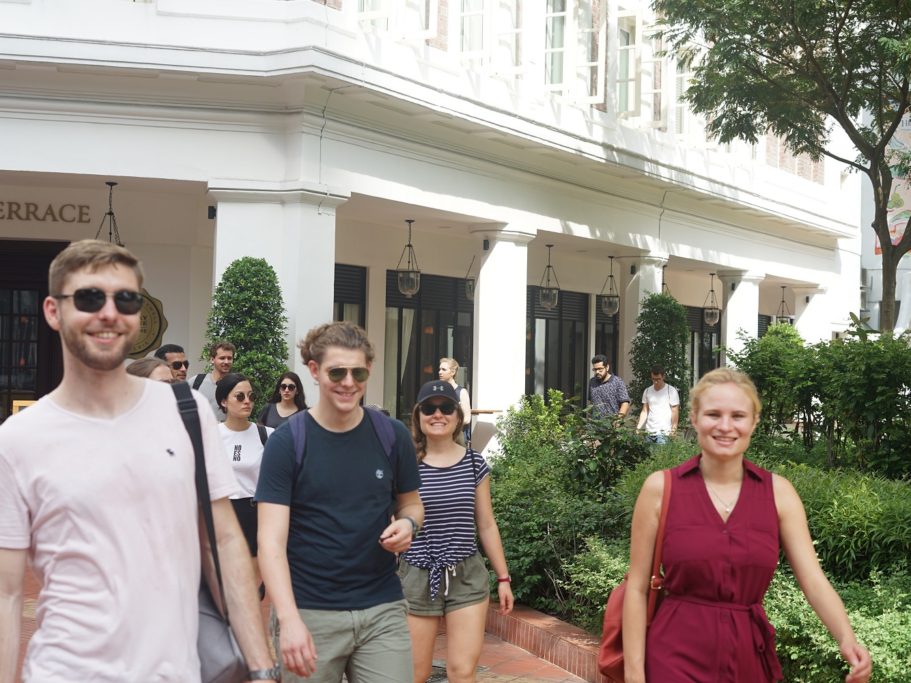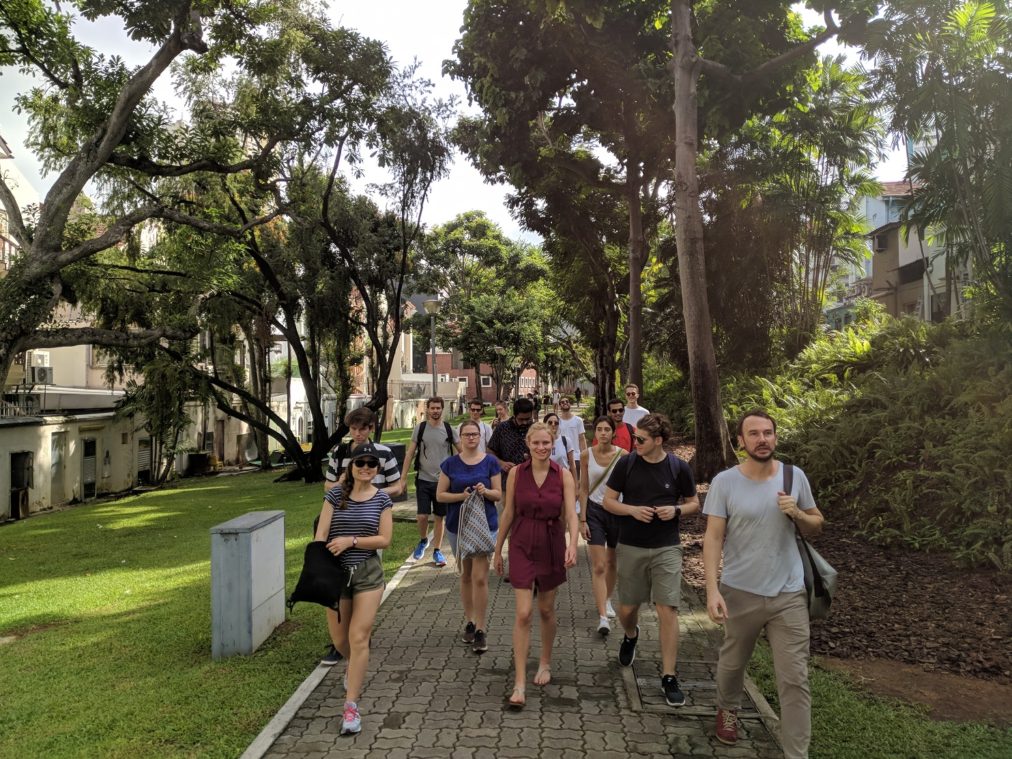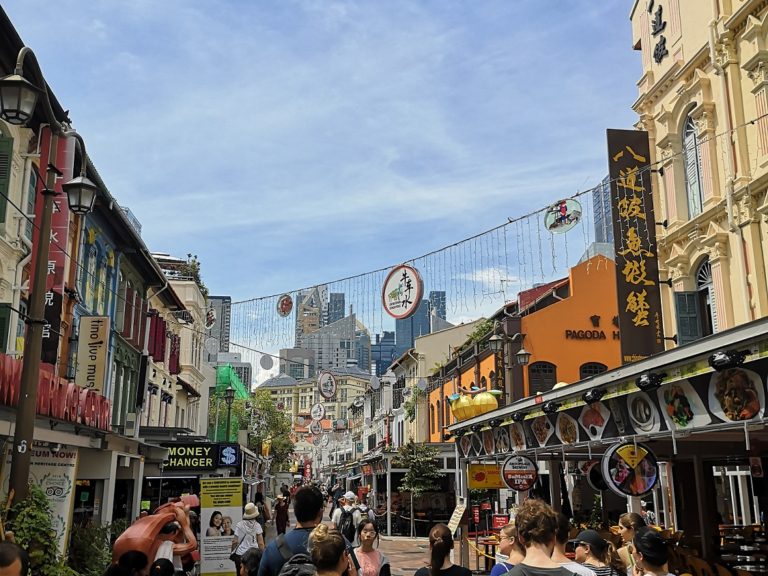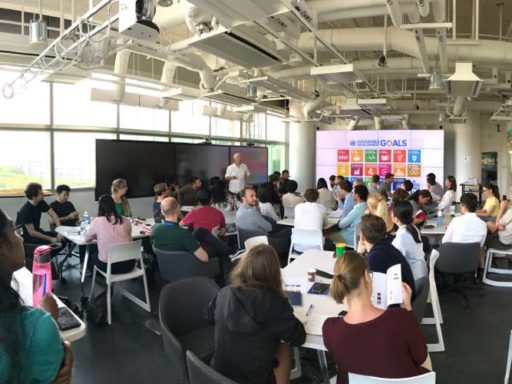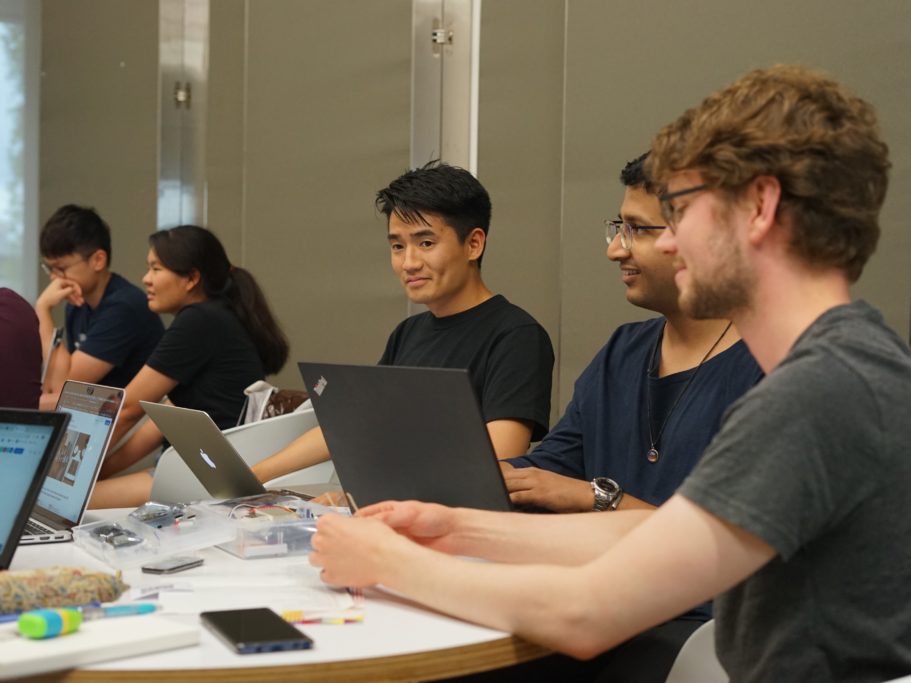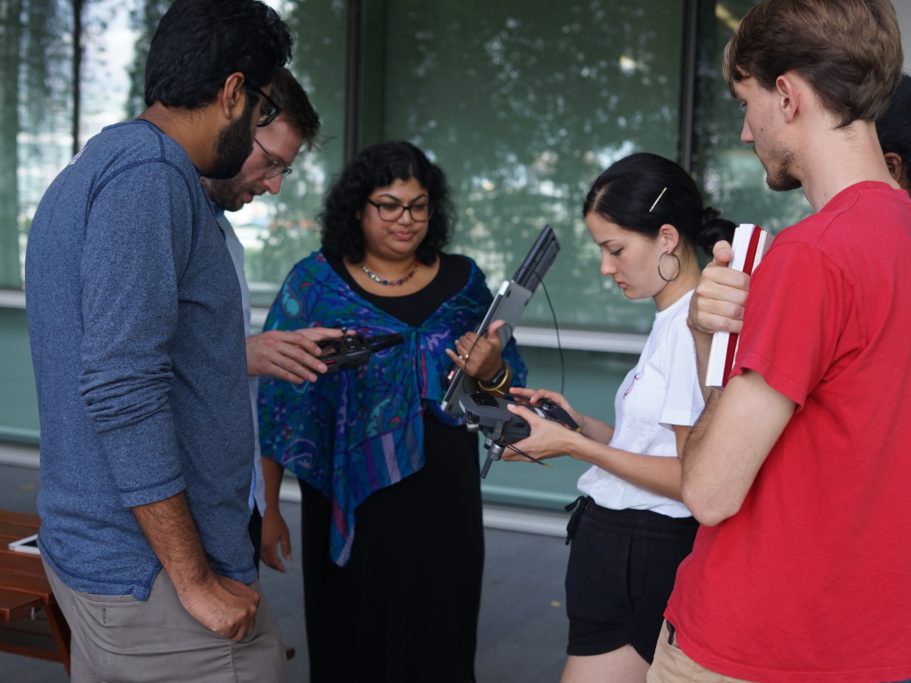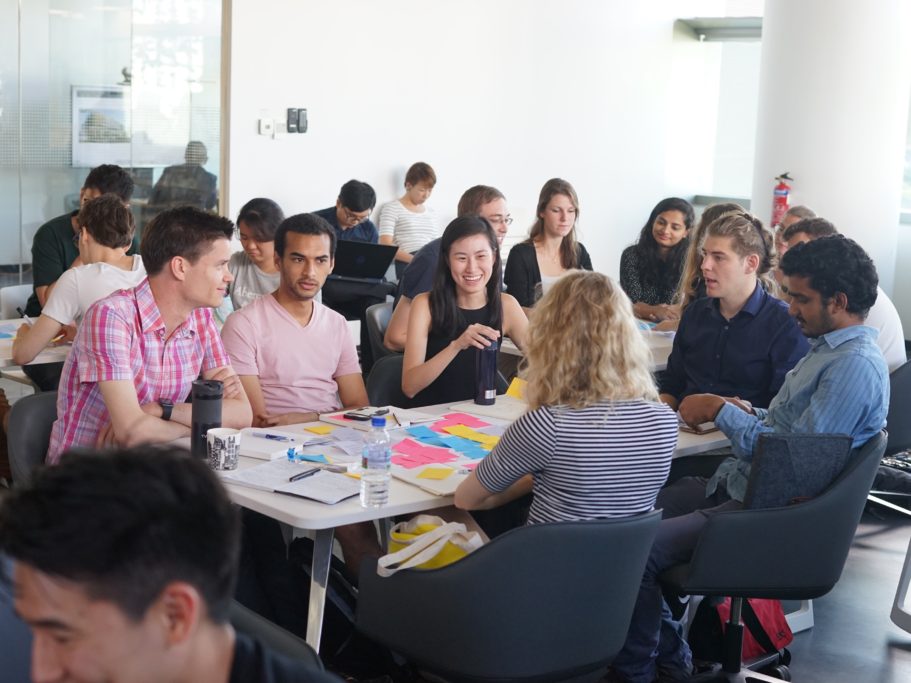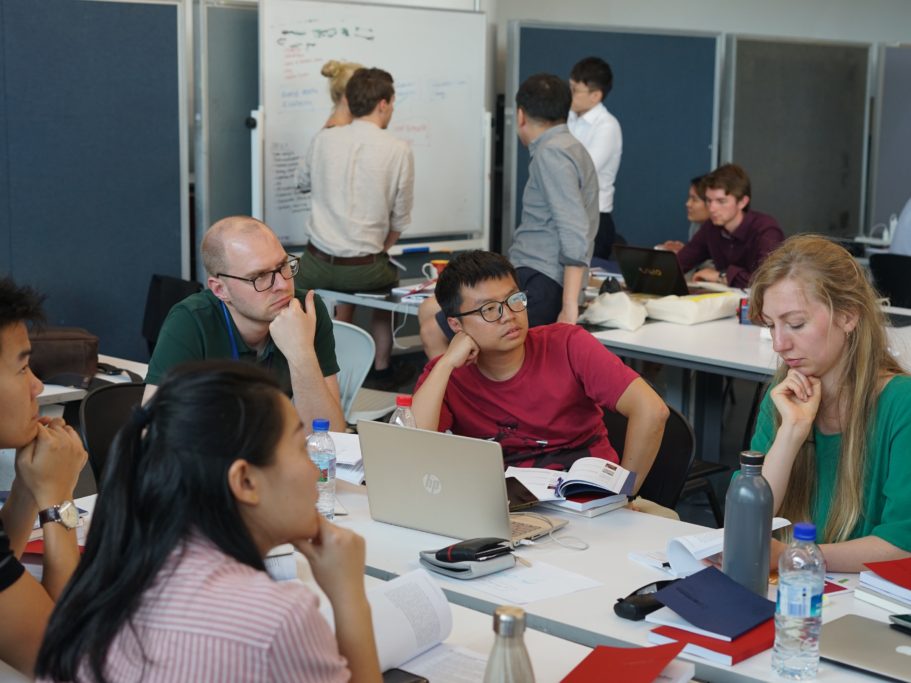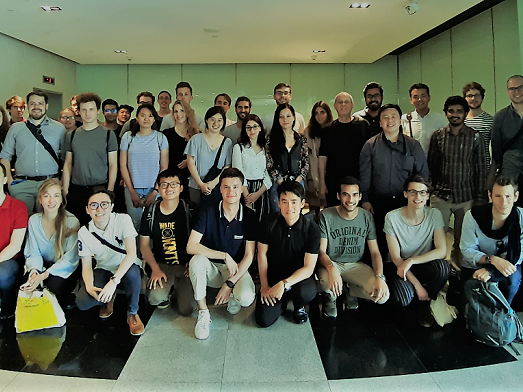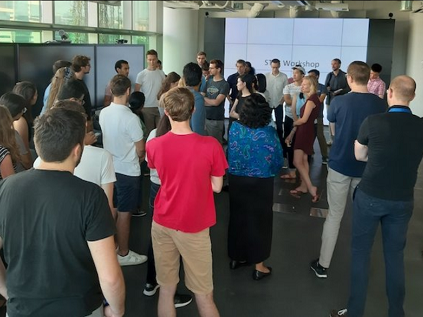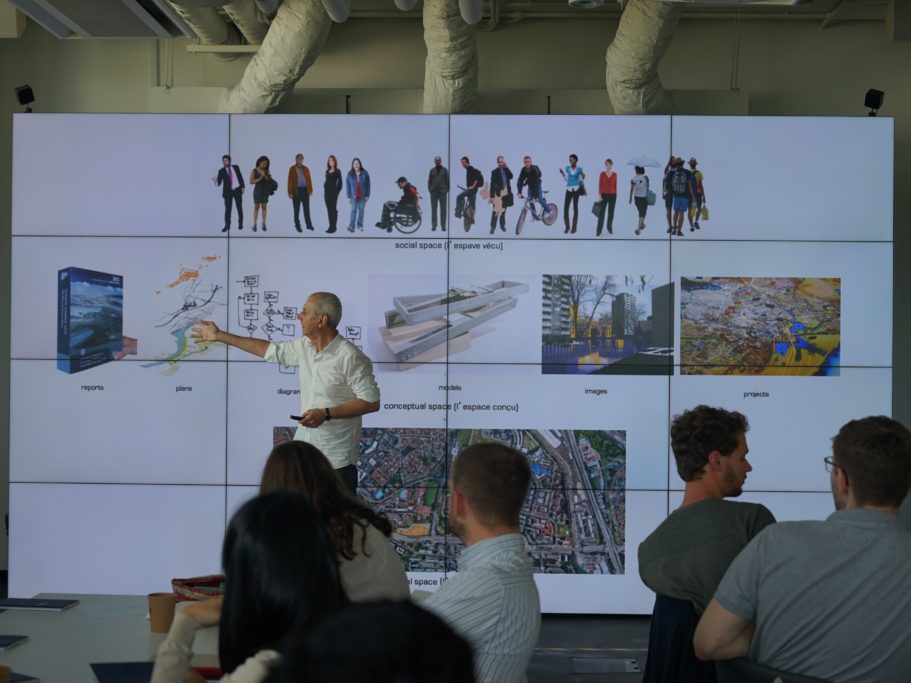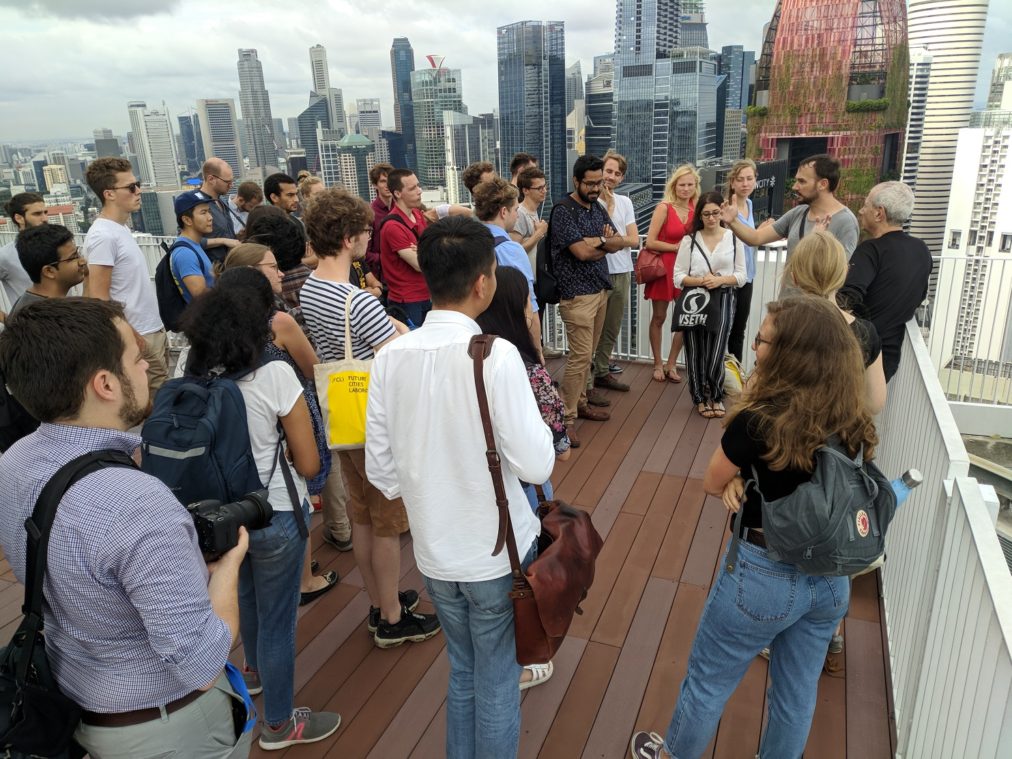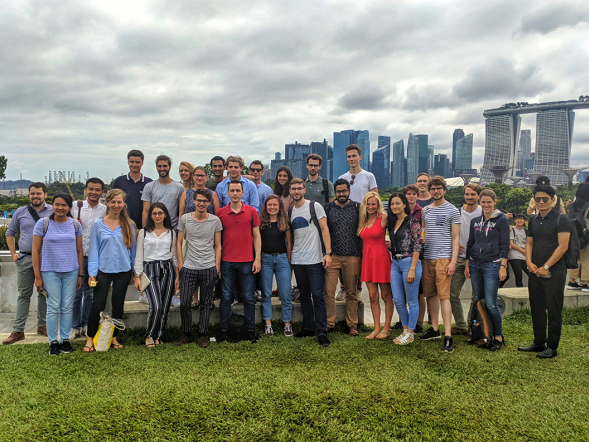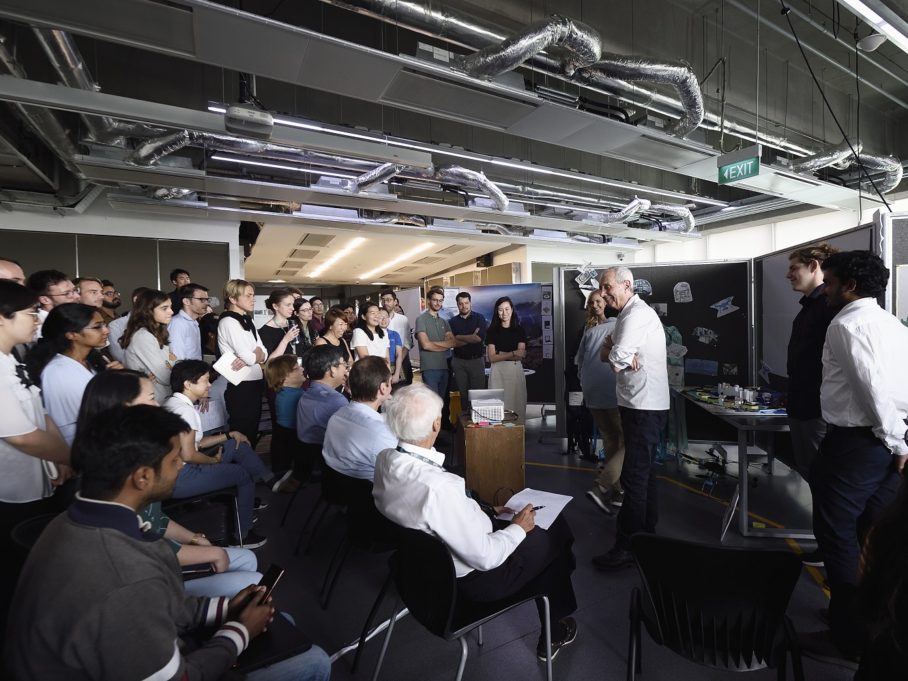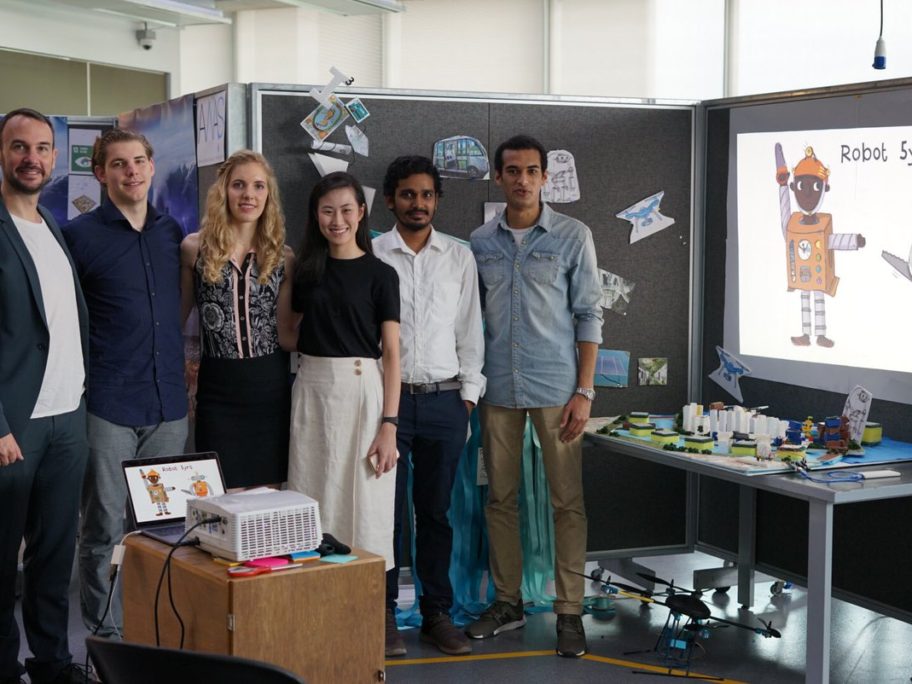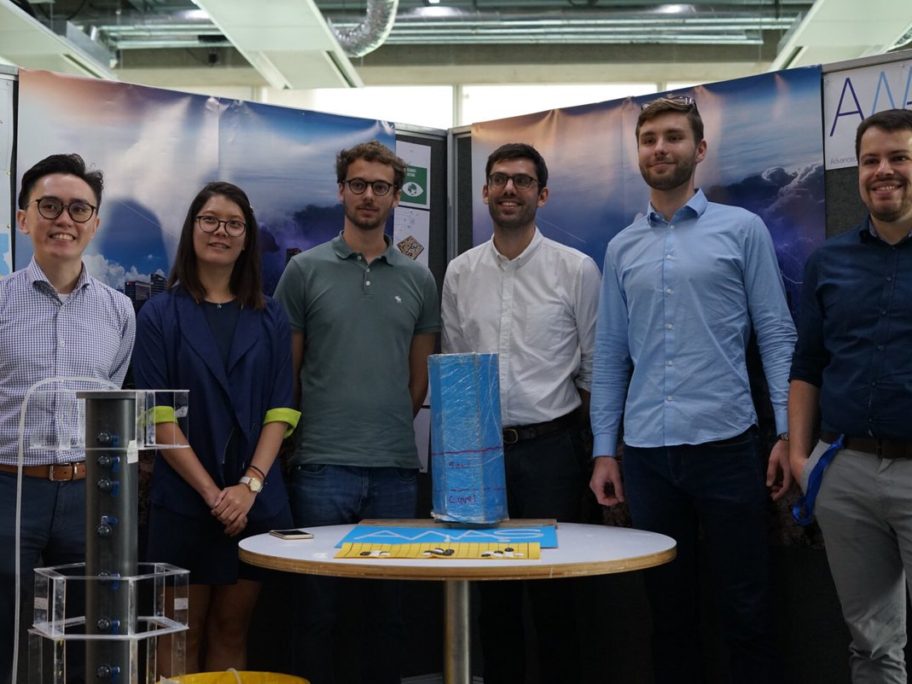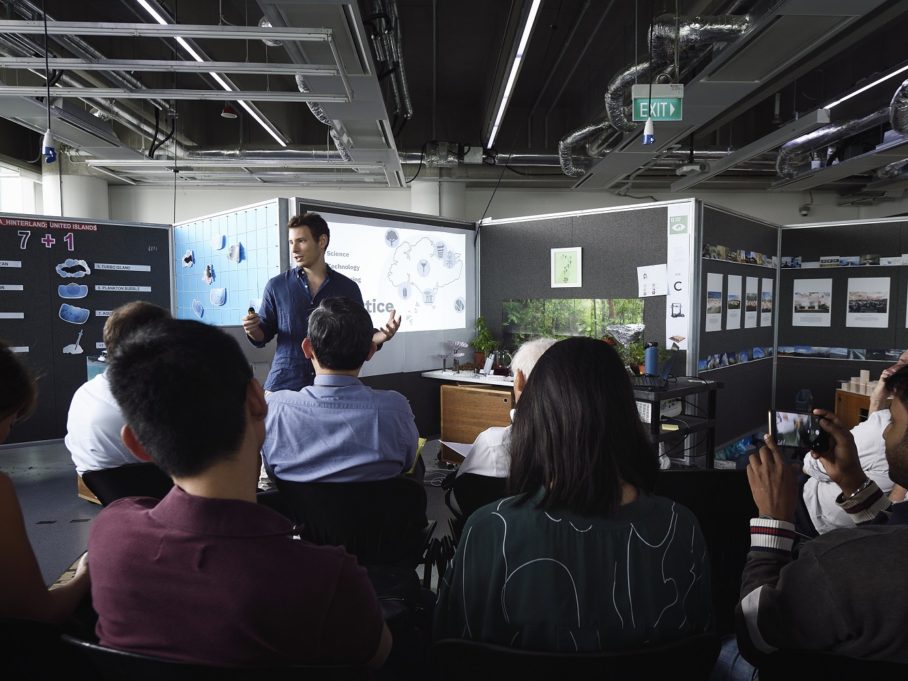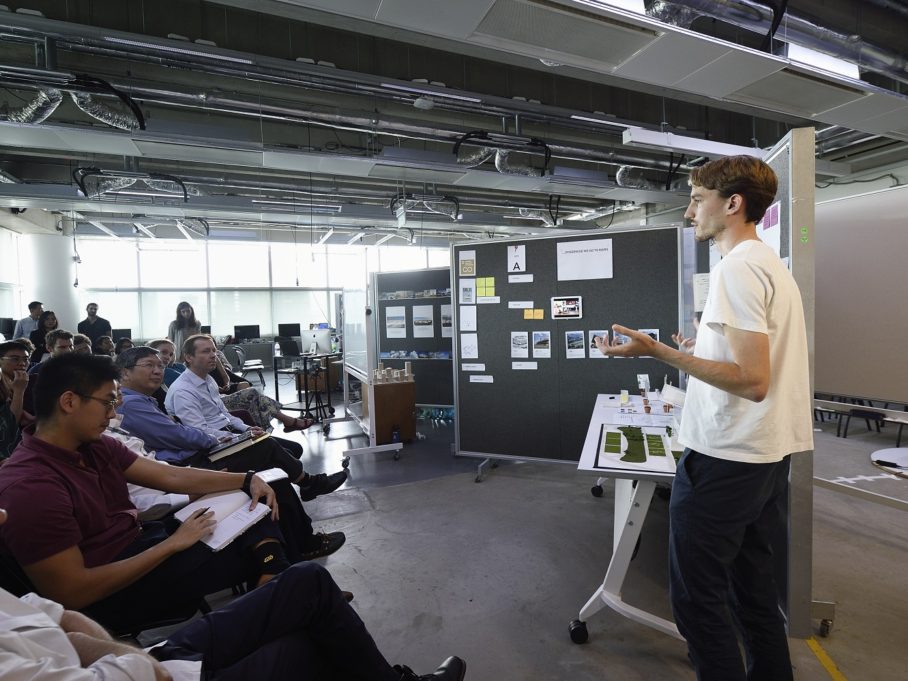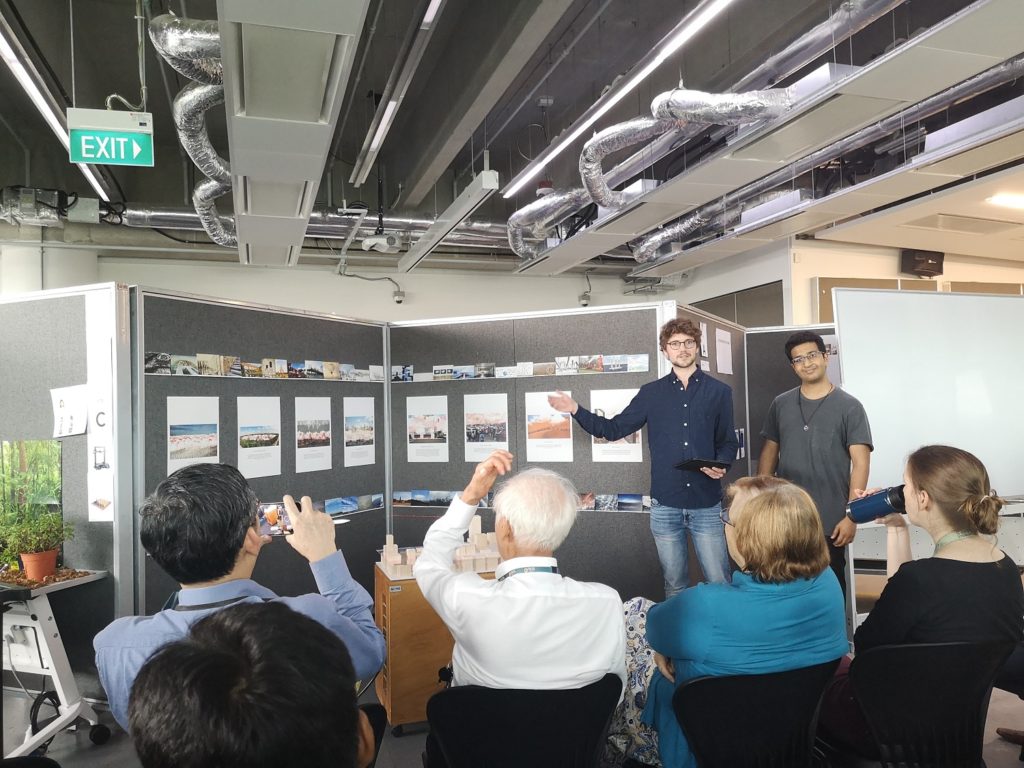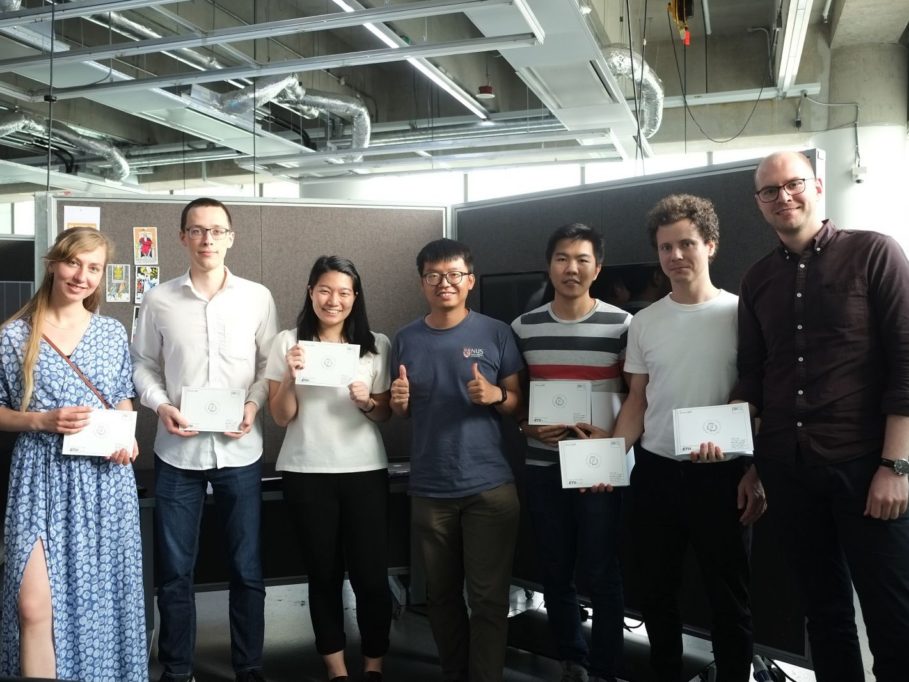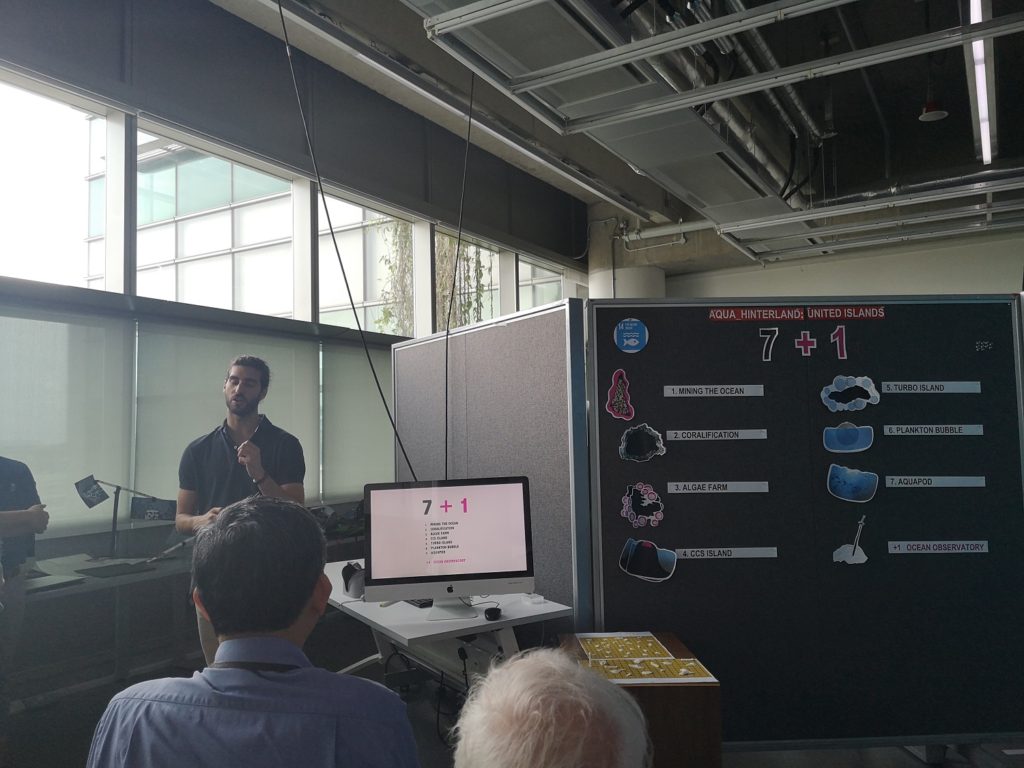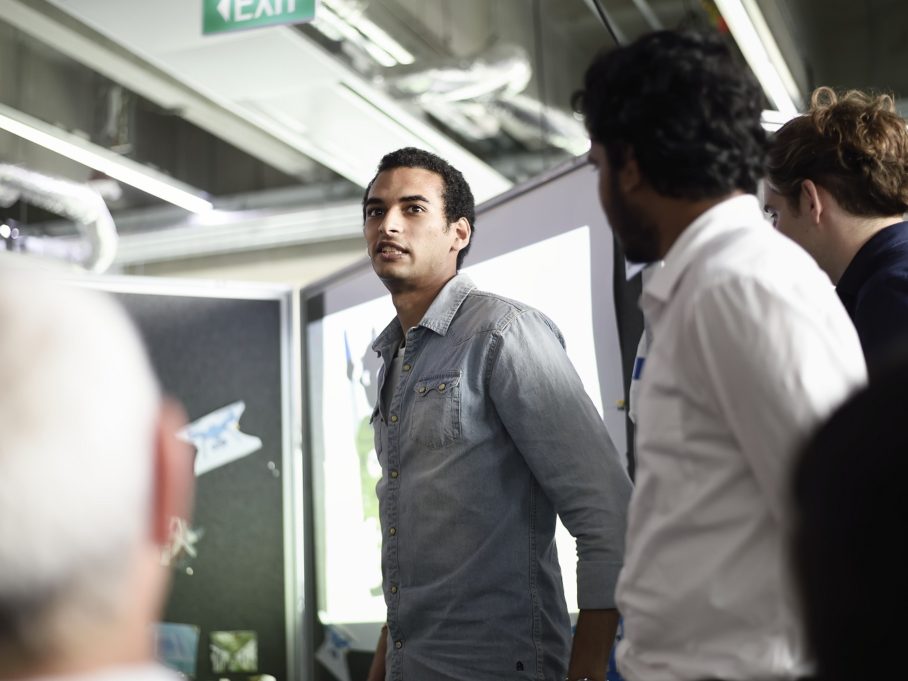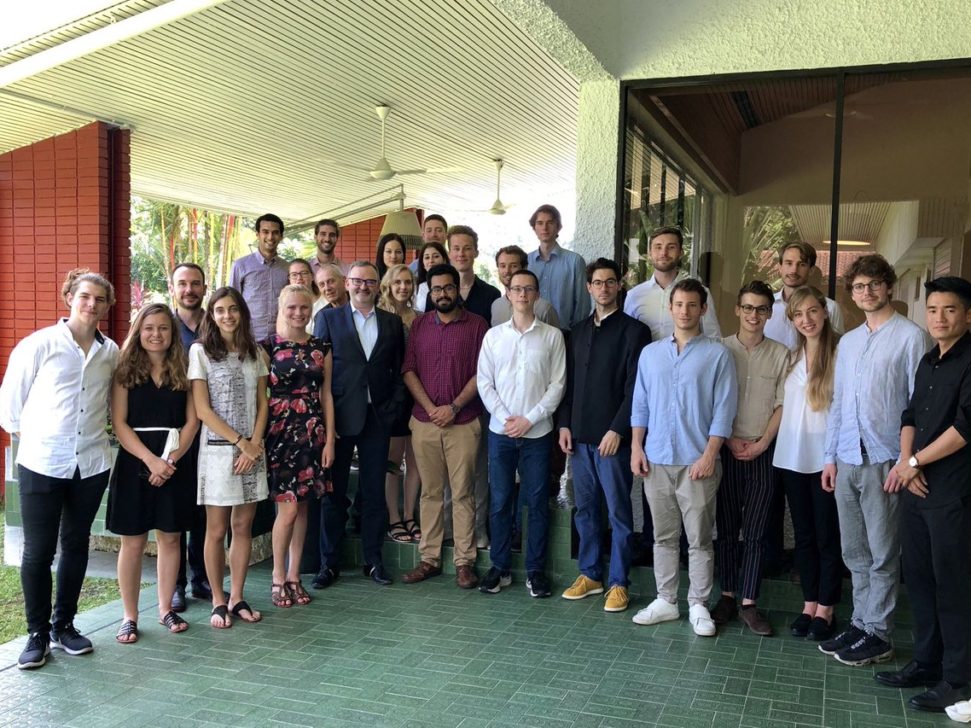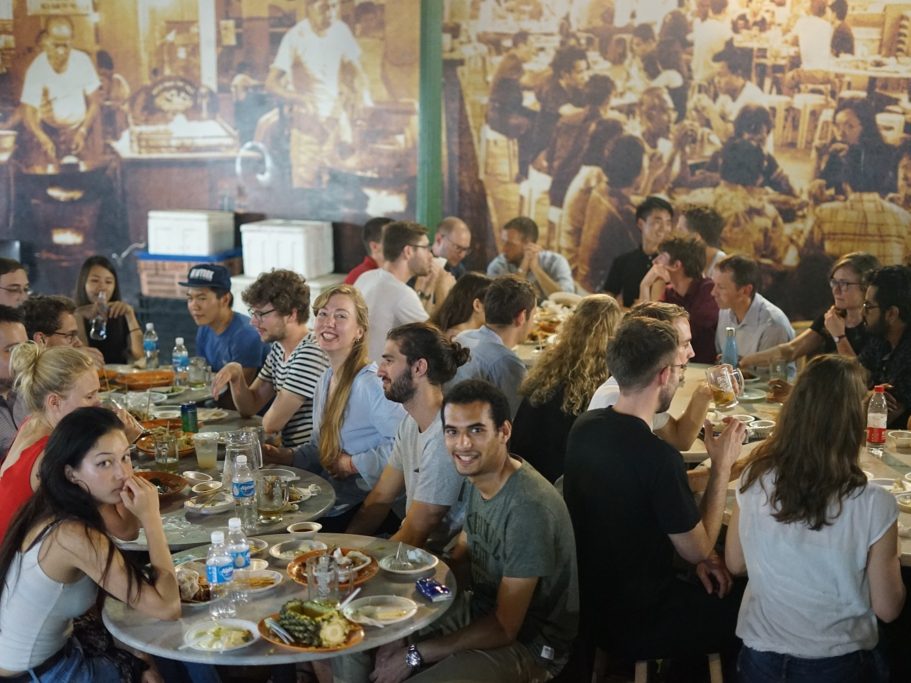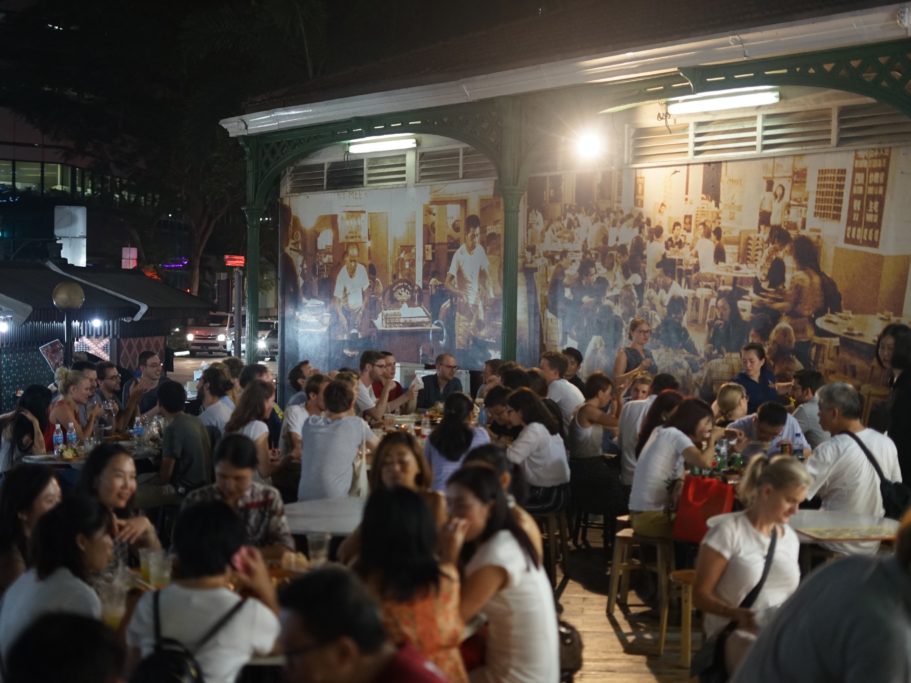Upon arrival in Singapore, we very quickly adjusted to the new environment and got to know the city’s people, nature and infrastructure through a series of walks and hikes. We walked across Chinatown, Little India and Arab street, hiked along a park connector known as Southern Ridges and visited heritage buildings, such as The Istana. And of course, there was the food! I really enjoyed eating at the hawker centers that are spread across the city, which offer a variety of delicious Asian dishes at affordable prices. I even experienced Durian, the King of Fruit, for the first time, the taste of which was not as bad as its smell. The highlight of this immersion week was enjoying a drink at the CÉ LA VI Club lounge that sits on top of the Marina Bay Sands, while appreciating the stunning 360º view of Singapore's city skyline.
Design thinking brings Zurich and Singapore together
by Yasser Belal, 06.08.2019

On top of Marina Barrage (photo credit: Geraldine Ee/ETH Zurich)
The societal and environmental challenges of today and the future call for interdisciplinary approaches to tackle increasingly complex problems. Aiming to introduce design thinking as an approach towards interdisciplinary work, the STP3 Workshop (Science, Technology, Prototyping, Policy, and Practice) brought together graduate students from different disciplines and universities in a design atelier setting in Singapore. The workshop is part of the first ETH Singapore Month on the theme of The Future of Urban Society, during which students combine science and design in developing new approaches to meet future challenges. Personally, this also marks my first foray to Asia.
The workshop commenced the following week, focusing on global urbanization processes and using the United Nations Sustainable Development Goals (SDGs) as a framework. Over two weeks we explored the theme of the future of urban society through a series of discussions, lectures and visits to Singapore government agencies, such as the Urban Redevelopment Authority and the Land Transport Authority. We had insightful conversations with senior planners and managers of those agencies about their concept and master plans for a compact city with very high population density. Despite a small land area of 722 km2, Singapore is home to 5.6 million people. These visits remain some of the many highlights of the month.
The Design Thinking approach was framed by input themes that we were asked to simultaneously address. Accordingly, each team was given one SDG foregrounding a specific global challenge and a site to ground the work in situ. Our SDG goal was number nine, which focuses on Industry, Innovation and Infrastructure, while our site was Pulau Brani island, which currently houses a container port and the headquarters of the police coast guards. These two elements perfectly matched our ideas for reshaping the island into a self-sustaining testing ground for innovative technologies. Singapore has already established itself as a tech hub in Southeast Asia and to further foster innovation, the government sustains spending on research on development at 1% of GDP. In the latest Research Innovation and Enterprise plan (RIE 2020), the government pledged to invest S$ 19 (CHF 13.8) billion into scientific and technological research.
In an interesting exercise on policy by Professor Cheryl Chung from the Lee Kuan Yew School of Public Policy, we were asked to arrange ourselves according to how hopeful we are about the future of urban society and how much control we feel we have over it. Although many participants were pessimistic, I remained positive as I linked the urban society to a football game. I agree that currently we are down by a couple of goals and do not have control, but looking into the future, I believe that we, the students, are the players to be brought to the pitch during the second half to equalize.
At the end of the workshop, each team presented its approach and prototype at an exhibition. I was absolutely delighted by the overwhelming endorsement for establishing a “Robots School” on Brani island in the future, with the aim of creating intelligent machines capable of learning and self-improving. Basically, the idea is to have a place where younger generations of robots learn not only from the older ones, but also to interact and collaborate with humans in a workspace.
Of course, it was not all work and no play. We attended an amazing “Opera in the Park” concert at the Botanic Gardens, which was recently named a United Nations World Heritage Site. We also had the chance to further explore the city, thanks to the events organized by Geraldine and Aurel from the Singapore-ETH Centre. We were honored to have the chance to meet the Swiss Ambassador to Singapore, Ambassador Fabrice Filliez, and present the outcomes of the month to him. All in all, I was fortunate to take a break from my regular studies, get out of my comfort zone, explore Southeast Asia and establish friendships by participating in the first ETH Singapore month. I am thankful for the amazing mentors I found in Professor Marc Angélil, Dr Aurel von Richthofen and Frederick Kim.
Now that I am back in Zurich, I sure do miss the way of life at the National University of Singa-pore UTown Residence. Hopefully, the connection between Singapore and ETH Zurich will grow stronger, offering more workshops and research collaborations, that promote critical thinking and cross-cultural exchanges.
Watch the video about the ETH Singapore Month in June 2019:
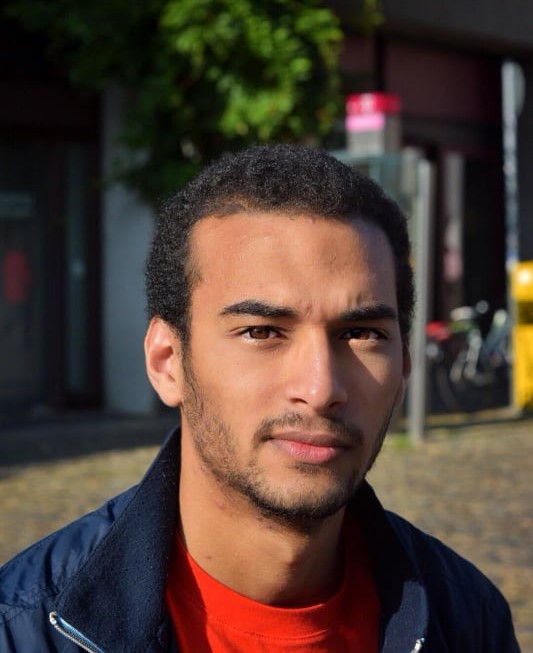
About the author
Yasser Belal is currently pursuing his Master's degree in Robotics, Systems and Control at ETH Zurich. Before starting his graduate studies, he completed his Bachelor's in Mechanical Engineering at the University of Duisburg-Essen, where he developed and implemented a new setup mode of a Cable Robot during his bachelor thesis.

